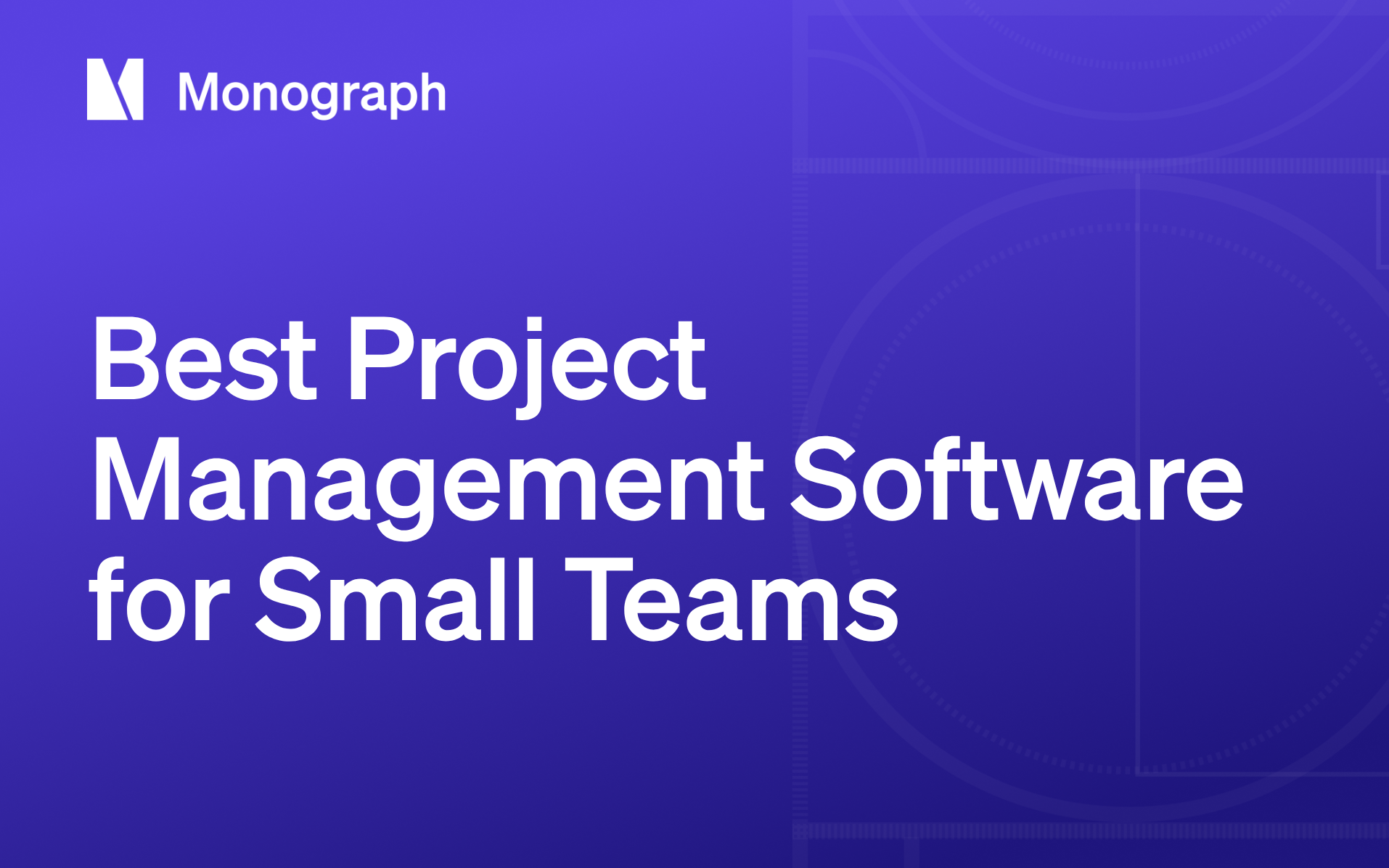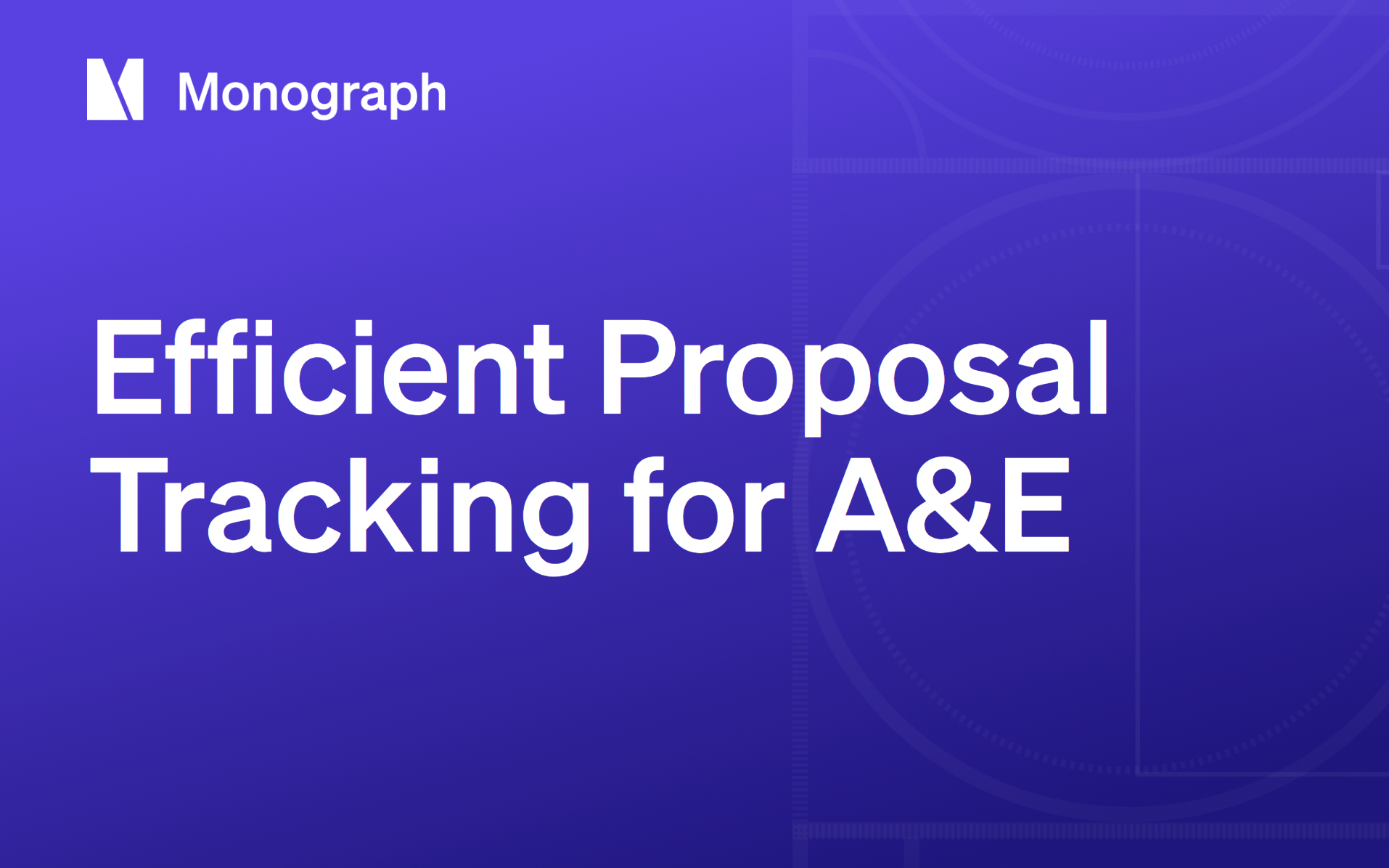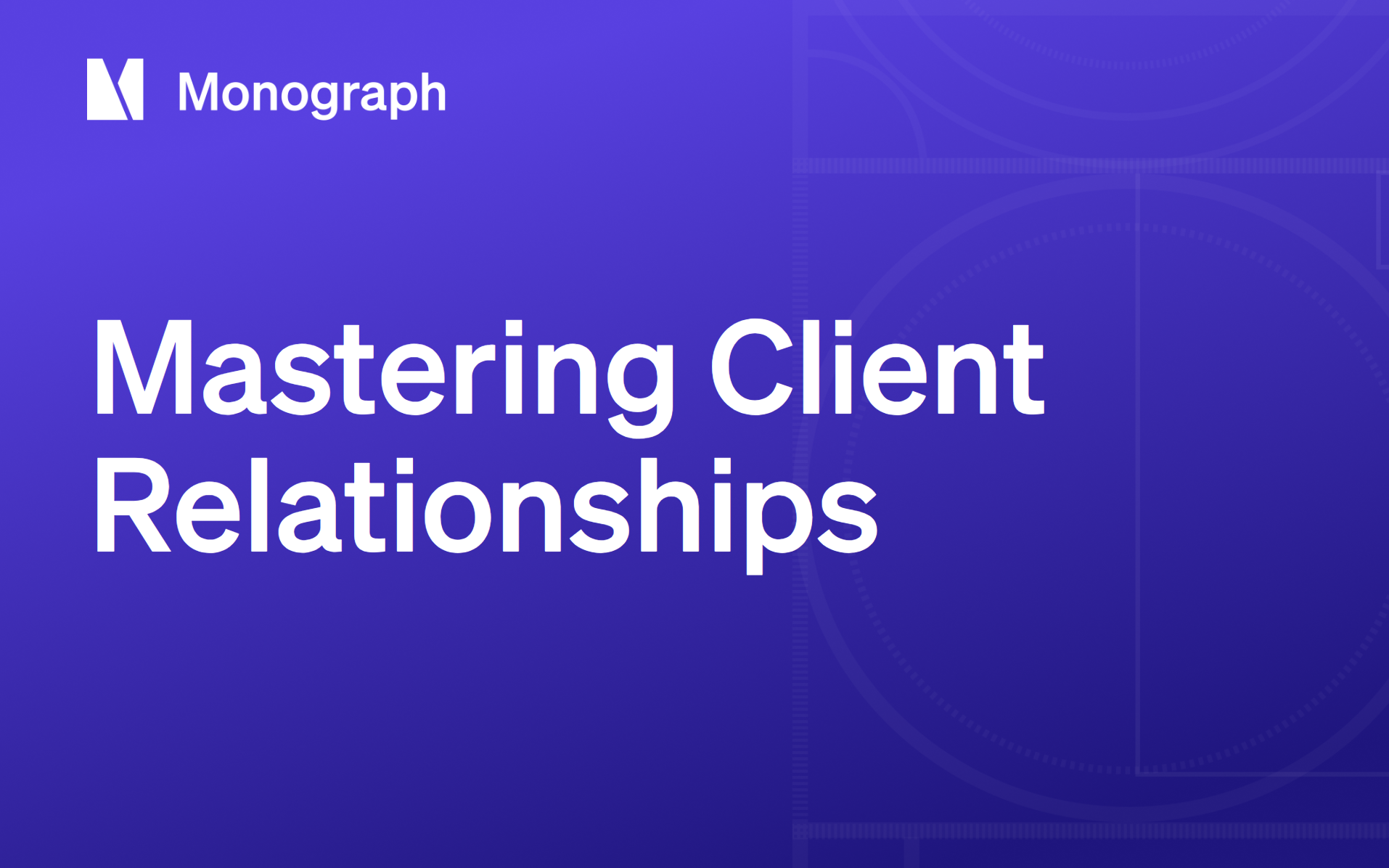Contents
For every project that seems to race towards permit with no speed bumps, you’ve got another one that stalls in schematic design, and every consultant wants answers on it yesterday. Small A&E teams juggle overlapping phases, tight deadlines, and endless coordination threads, often without a dedicated project manager. That chaos doesn't just threaten schedules, it kills profit. Real-time budget and resource visibility isn't a luxury for firms your size, it's survival. When you can see exactly where hours and dollars go, you course-correct before scope creep turns into write-offs and burnout.
This article compares six project management tools that give small A&E teams the financial clarity and workload control spreadsheets can't provide. You'll discover which platform fits your priorities and your bottom line.
Quick-Look Comparison Table
You don't always have time to wade through spec sheets, so here's the at-a-glance view you can scan between client calls:
* Per user/month, billed annually where pricing is published.
** "Via third-party" indicates connection through Zapier or similar middleware rather than a native integration.
Monograph: Best for A&E Budget Visibility
You already know the dread of opening six spreadsheets just to answer a simple question: "Are we on budget?" Monograph ends that scramble. Built by architects and engineers who have stood where you're standing, it speaks your language: phases, fees, consultants, without translation layers.
The signature Monograph's MoneyGantt™ view turns every project into a living cross-section of scope, schedule, and cash. One glance tells you whether schematic design is burning through hours too fast or if construction administration is drifting past fee. No formulas, no mental math, just visual truth.
The platform integrates seamlessly with your existing workflows:
- Direct QuickBooks sync pulls approved hours and expenses into invoices automatically
- Stripe integration marks invoices as paid instantly when clients submit payment
- Phase-based resource planning lets you drag people across timelines and see utilization impact immediately
- Real-time budget tracking shows fee burn before scope creep becomes write-offs
This integrated approach means you adjust before overtime becomes inevitable, giving you control that feels almost unfair.
It's not hype. Monograph users report measurable improvements in efficiency and profitability, with some firms seeing up to 50% gains in administrative efficiency. If you're the principal who wants real-time budget clarity without sacrificing design hours, this solution gives you the structural support your projects and profits need.
monday.com: Best Overall for Small Teams
While specialized tools excel in specific areas, monday.com delivers versatility that small A&E teams crave. If you want one place where every drawing review, request for information (RFI), and design deadline lives, this platform provides color-coded boards that actually make sense. Starting at about $10 per user each month with a three-seat minimum, it offers multiple view options: timelines, Kanban, calendar, and Gantt, so you can switch perspectives as fast as a client changes their mind.
Drag-and-drop automations handle the busywork. They send reminders, update statuses, even nudge consultants, while built-in time tracking keeps billable hours tied to the right phase. The integration library delivers real value with more than 200 native connections, including the ability to pull drawings from Drive, as well as integrations with tools like Slack and various project management platforms. A comprehensive comparison shows how quickly you can customize boards without code.
For accounting sync, the platform connects to QuickBooks through its marketplace, but expect to pay for a higher tier or use a connector app. The polished mobile app works well for on-site updates and the interface gets new hires productive in an afternoon. While granular permissions require Pro plans and each tier caps monthly automations, monday.com works for small A&E teams that need versatility without heavy setup.
ClickUp: Best for Custom Workflows
When you're juggling everything from schematic design through punch-list closeout, rigid software just slows you down. ClickUp bends to the way your firm already works.
Set up the platform to match your workflow:
- Create Spaces for each discipline to keep work organized by team
- Nest Folders for clients so project history stays accessible
- Build phase-specific Lists where schematic tasks never mingle with construction-administration RFIs
- Add Custom fields to capture billable phase codes or consultant response deadlines
Need a quick sketch review? Spin up a Whiteboard and link it directly to the task so nothing gets lost.
The platform's breadth is impressive: real-time chat, task dependencies, granular permissions, native time tracking, and dashboards that surface workload or fee burn at a glance. The free forever plan lets small teams test everything without a credit card, while the Unlimited tier at roughly $7 per user per month removes storage caps and adds advanced automations for schedule updates and overdue alerts.
The advantages include near-limitless configurability, a rich integration library with 1,000+ apps, and built-in docs that replace scattered Word files. However, the learning curve is steep, and accounting sync still requires a third-party connector rather than native integration. If you're the operations lead who'd rather model your workflow than force-fit it into generic templates, this tool provides the control you need without writing code.
Plaky: Best Free Plan
For lean A&E studios where every dollar counts, Plaky offers the rare opportunity to organize projects without opening your wallet. Its forever-free tier provides unlimited projects and unlimited users, so interns, consultants, and principals can all live on the same board without watching the meter rise. The interface works exactly as you'd expect: drag-and-drop Kanban columns, color-coded statuses, deadline reminders, and takes minutes to teach the team. You can trace every change through an activity log, which helps when you're juggling multiple schematic options for the same client.
What you won't find are the financial guardrails architecture and engineering work demands. There's no budget tracking, invoicing, or QuickBooks sync, so you'll still be flipping between spreadsheets when the client asks about fee burn. For zero cost, that trade-off makes sense. Think of this platform as scaffolding: perfectly serviceable while you're small and testing workflows. When cash flow and project complexity start to stretch the capabilities, move to an A&E-specific system and bring your lessons learned with you.
Smartsheet: Best Excel-Style Scalability
If spreadsheets still run your project tracking because they feel familiar, Smartsheet bridges that gap without forcing you to abandon what works. It's essentially Excel with proper project controls built in: Gantt charts, resource heat maps, and automated reminders that actually understand design phases, consultant coordination, and construction timelines.
You work in a familiar grid interface, then switch to Gantt, calendar, or card views when the project demands it. The platform handles the complexity A&E work requires:
- Column formulas automatically roll up costs across phases for real-time budget burn visibility
- Resource manager flags overloaded team members across projects before schedules slip
- Dashboards pull live data from every sheet for quick progress checks
- Multiple view options transform grid data into timelines or cards without rebuilding
This flexibility turns painful project status meetings into efficient progress reviews.
The Individual plan costs about $9 per user monthly for up to ten seats, with a free tier for basic functionality. According to recent comparisons of small-team tools, the real value is scalability: manage a single tenant improvement today and a campus master plan next year without migrating data or learning new systems. The complexity can overwhelm very small teams, and you'll need third-party connectors for financial software sync. But if you need spreadsheet flexibility with enterprise-grade reporting, this solution grows with your practice from first drawings through project closeout.
Clockify: Best Lightweight Time & Cost Tracker
When your biggest problem is unbilled hours disappearing into project black holes, Clockify cuts straight to the chase. The forever-free plan handles unlimited projects and users, tracks billable time, and generates the cost reports you need to stop guessing whether projects are profitable. No credit card required, no feature limits that matter for basic time capture.
For $7.99 per user monthly when billed annually, the Pro plan adds real-time dashboards and custom fields, useful when you need to track different labor rates for principals versus project architects, or separate design phases from construction administration time. Setup is genuinely simple: add your team, create project codes, and watch timesheets populate automatically. Reports export clean to CSV or PDF, giving you solid backup when clients question invoices or when you're deciding whether that next consultant hire makes financial sense.
The simplicity comes with limits. This tool won't handle phased budgeting, consultant coordination, or connect directly to accounting software. Growing firms often pair it with more comprehensive project management once they need workload forecasting across multiple consultants and complex delivery schedules. If your immediate pain is time leaking out of projects without tracking, Clockify stops that problem today. Think of it as essential project instrumentation, not the full dashboard, but the gauges that tell you if you're profitable.
Choosing the Right Fit for Your Practice
Start by mapping your biggest operational challenges. If real-time budget oversight is critical to your firm's profitability, your needs differ from teams requiring extensive workflow customization or zero-cost entry points. Project cost overruns remain the industry standard: only 31% of projects finish within 10% of budget over a three-year span, and that pressure intensifies in small A&E firms operating on tight margins.
Match the tool to your specific requirements. Consider Monograph for A&E budget visibility, monday.com for overall small team functionality, ClickUp for custom workflows, Plaky for free project organization, Smartsheet for Excel-style scalability, or Clockify for lightweight time and cost tracking.
Whichever platform you choose to pilot, prioritize instant clarity on time, fees, and staffing allocation. Without real-time visibility, even sophisticated interfaces function as expensive spreadsheets.
Get Real-Time Budget Visibility With Monograph
Project management software should eliminate chaos, not add to it. Small A&E teams need tools that speak their language: phases, fees, consultant coordination, and profit margins.
If budget visibility tops your priority list, Monograph transforms data into actionable decisions before cash flow issues develop. Built specifically for architects and engineers, it centralizes everything from time tracking to invoicing in one intuitive platform.
Take control of your project finances. Book a demo.
Frequently Asked Questions
What features should small A&E teams prioritize in project management software?
Focus on real-time budget visibility, phase-based time tracking, and native accounting integration. Your software should show you immediately whether projects are profitable, not force you to export data and build formulas. Look for tools that understand design phases and consultant coordination rather than generic task management.
How much should we budget for project management software?
Expect to invest between $7-15 per user monthly for robust features, though free options work for basic coordination. Consider the hidden costs: implementation time, training, and potential third-party integrations. A&E-specific tools often deliver better ROI despite higher upfront costs because they eliminate workflow inefficiencies that generic platforms create.
Can we switch project management software without disrupting active projects?
Yes, but plan the transition strategically. Start by running both systems in parallel for 2-3 weeks on one or two pilot projects. Export historical data you'll need for reference, set clear cutover dates, and train your team before migrating all projects. Most platforms offer implementation support to minimize disruption during the switch.
Do all team members need paid accounts?
It depends on the platform. Some tools like Plaky offer unlimited users at no cost, while others charge per seat. Many A&E-specific platforms provide free consultant accounts with limited access, reducing your licensing costs while maintaining project visibility across external partners.





